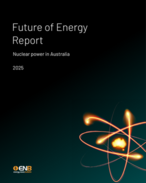CSIRO and its partners have developed Sedsim, a high-performance computing program used to predict seabed changes over long periods of time.
Industry, particularly the oil and gas sector, would be the major beneficiaries of this research which could reduce capital expenditure of seabed pipelines and reduce risks of over and under-engineering pipeline construction, according to CSIRO.
CSIRO Wealth from Oceans Flagship director Craig Roy said this research was a world first, with CSIRO setting the pace globally in seabed modelling.
"We are providing the foundation capabilities for understanding how the seabed will change based on realistic climate change scenarios," Roy said.
This could have a major impact in predicting the risk to billion-dollar infrastructure, according to project leader Dr Cedric Griffiths.
"We know the sediment that makes up the Australian seabed varies tremendously from region to region and will respond differently to future climate change," Griffiths said.
"One of the main applications will be to assist in the appropriate design of oil and gas pipelines, in both low and high risk areas. If we can predict how the future movement of waves, currents and the seabed will affect pipelines, we can also help prevent fractures and spillages."
Sedsim seabed modelling brings together an advanced sediment transport model, capable of predicting sediment movement over decades, with advanced climate change models, specifically targeted at Australia, according to Griffiths.
"It can also be applied globally using a state of the art numeric model to predict sediment erosion, transport and deposition in a wide variety of sedimentary environments, including shallow to deep marine. The program can model the way sediment responds to waves, current and tidal effects," Griffiths said.
This work would shed light on how the seabed characteristics may change over the next 50 years, and was aligned closely with the National Oceans Office's Regional Marine Planning activities.
There are currently about 1000km of offshore pipelines in Australia's Exclusive Economic Zone (EEZ) and another 1000km of pipelines proposed to be laid in Australian and PNG waters in coming years.
"In the next decade, up to $10 billion may be spent on thousands of kilometres of offshore pipelines worldwide," Griffiths said.
"Substantial environmental and costs savings could be made if these pipelines can be designed to suit both the present sub-sea environment and the future seabed conditions."






















